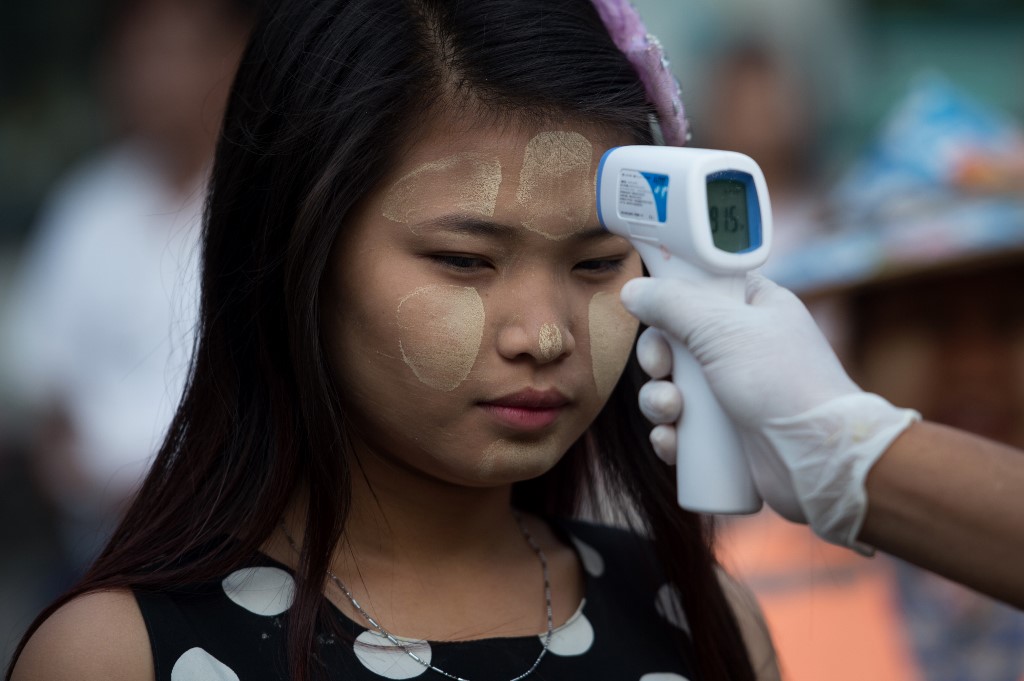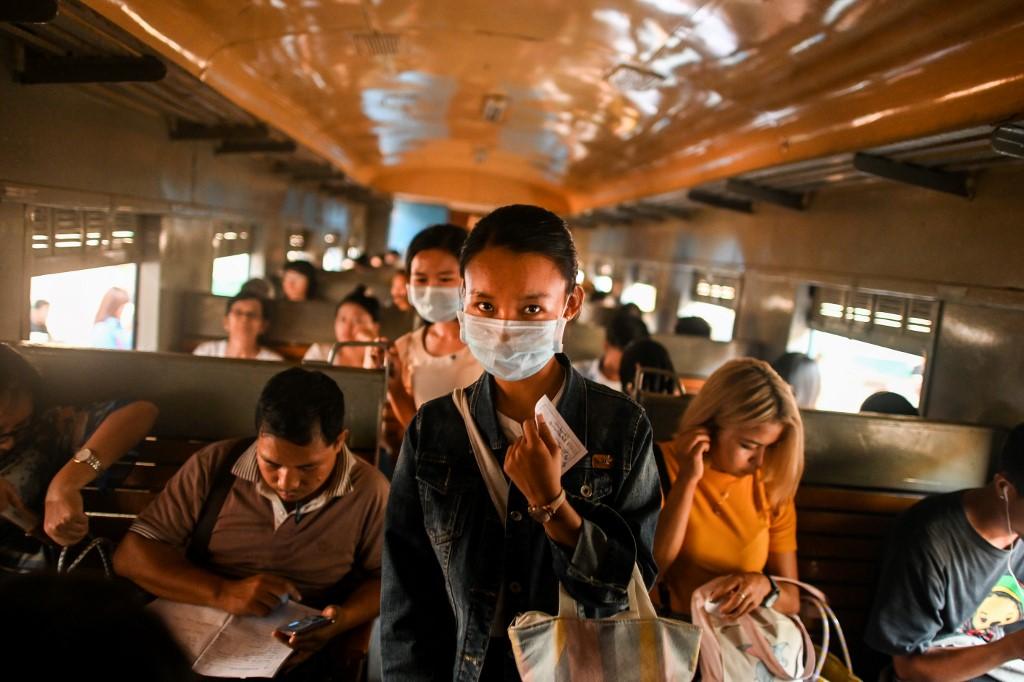
Dr Marcus Zervos is the head of infectious diseases at non-profit health care organisation Henry Ford Health System. He is also the assistant dean of global affairs at Wayne State University School of Medicine in Michigan, USA.
Last November, Zervos worked on public health and infectious diseases at a Yangon hospital before boarding a plane to China’s Wuhan for another collaboration on building hospital capacity.
Weeks later, the government in Wuhan confirmed that health authorities were treating dozens of cases of a new virus. Flash forward to now and the disease—named Covid-19—has killed more than 12,700 people worldwide.
The World Health Organisation has declared the spiralling outbreak a pandemic, as an estimated 900 million people in 35 countries stay confined in their homes—two thirds of those because of government lockdowns, according to an AFP tally.
Myanmar has zero confirmed cases, says the government, although people have cast doubt over that claim, especially because the country shares a porous border of more than 1,400 miles (2,200 kilometres) with China.
We spoke with Zervos to find out more.
As of 8pm, March 21, Myanmar tested 201 people for the new coronavirus known as Covid-19 and detected zero cases, according to the health ministry’s website, though several people with flu-like symptoms have died in quarantine. What is your take on this?
Coronavirus has spread worldwide, including in Southeast Asia. I believe the virus is present globally. There are difficulties with the testing, which has been slow to develop. The ability to test and diagnose cases has been limited in many countries, including in the United States.
There are likely many more cases globally than we are able to test. I have no ability to say whether there are cases in Myanmar or not, but I would highly suspect there are, because cases have spread globally.
Wuhan probably had its initial infections in late November or early December, and then there were at least five million people who made their way out of the Wuhan area before the strict quarantine took place. It’s likely they spread the virus all over the area. There are many countries that have seen serious infections and even deaths in people that we have not been able to diagnose because of the limitations of the testing.
What are the chances an outbreak has already happened in Myanmar—that the country has been through a kind of quiet crisis without knowing it?
It is hard to say when the worst of it will occur. I believe in transparency and the free dissemination of information, which is important to control the outbreak. I would highly suspect there are cases in Myanmar.
It is important to know if there are cases, how many and where they are, so control measures can be implemented. It’s impossible to say how many cases there are unless testing is done. It is impossible to say when it started because testing would have had to been done.
Elderly people falling ill and dying of pneumonia may not be seen as unusual and hospitals have not reported high cases of patients with respiratory problems. Other than testing, how else could we know if there was a Covid-19 outbreak?
Pneumonia is a common cause of death, particularly among the elderly. Influenza was also very common over the past few months.
It’s possible people die of other infections, influenza or bacterial infections, but they can also die of coronavirus. Unless there was testing done specifically for it then we wouldn’t know if it’s one thing or another—unless you see an increase in deaths in a country, then that would be another alarm.
Even if there is relatively low life expectancy, if more people in an area or country develop pneumonia and start dying, we would be concerned there is coronavirus.
That’s one of the things we think it’s important to follow. Not just the infections that are documented but also how many people are dying and how many pneumonia cases are occurring.
It would be good to see those statistics.
I visited Myanmar’s minister of health and I felt like he did have a commitment to the health of the people. The people in the national laboratory that I also visited were very confident in their laboratory testing and I believe they do want to help the people in Myanmar. I thought they were doing a good job in trying to protect public health.
If you Google me, I don’t hesitate to criticise if I see something. I was involved in the water crisis in Flint in the United States, where people were poisoned with lead. I would criticise if I thought there was an issue, but I thought the minister of health and the national laboratory were committed to the health of the people of Myanmar.
If we assume the virus has been here for about three months but has not been confirmed because of limited testing capabilities, could people have begun to build immunity against it?
I wouldn’t say three or four months. China was December, January, and if Myanmar did have infections that weren’t tested, it would be sometime after that.
What happens is an expected increase [of infections] and then immunity develops in the population. We are hoping to see a decrease in cases over time, but that’s impossible to predict because it’s a new, very contagious virus that is spreading rapidly so we don’t know when the outbreak globally will be over.
How long would it take for a population to develop immunity?
Nobody knows the answer to that question, but we believe that it will still be several months. It’s not something that will be over in a few weeks.
We believe control measures are important and we hope over time immunity will develop in populations and reduce the number of infections.
Myanmar has closed its land borders to foreign nationals, cancelled mass gatherings, and suspended visa services, among other measures. But there has been no lockdown as seen in other countries. What should the next step be for Myanmar?
Even though Myanmar hasn’t reported any cases, it is still prudent to implement control measures that are known to be effective. Large gatherings should be limited. We are now recommending limiting them to 10 people.
In many countries, schools are closed. People should wash their hands as much as they can and distance themselves from sick people or large groups. The border crossing is controversial. It’s hard to say whether it’s effective or not, but some countries have done it effectively.
What’s your advice for individuals living in Myanmar right now?
Limit being in large groups. Social distancing is important, but it’s really physical distancing—to be as much as possible more than six feet away from somebody, especially if they are sick or coughing.
So a kind of semi self-isolation?
Still go to the shops and go out get food, not stay in isolation. But some limitation of public activities is prudent.
Is there any point to self-isolate if no one else is doing it?
An important point is to do what’s possible in the context of the country. As much as this is possible, even if others are not doing it, it’s still important for the individual to do what they can.
Chinese researchers projected that high temperatures and relative high humidity could help cut transmission of the virus. In mostly tropical Myanmar, some people are pinning their hopes on this. Is there any validity to this theory?
No. It has spread globally and some of the reports showing that it is not as common in tropical countries may reflect that testing hasn’t been done. We do know there is seasonal variability for flu and there may also be for this one. But I would be more worried that many countries are not able to do the testing that’s needed.
When do you think a vaccine will be available?
The vaccine has just gone into clinical trials. It goes through an initial safety period and then there is immunity development. Then it goes into a larger study. It will likely be 12 to 18 months from now.
Overall, Covid-19 looks more serious than the common flu and elderly people seem to be more vulnerable. How concerned should young people be about developing severe symptoms?
It can be anything from being totally asymptomatic to more severe infections. About 80 percent of people have relatively mild symptoms, but the problem is that a lot of infections lead to more serious hospitalisations.
If somebody is elderly or vulnerable or has an existing medical illness, they are more likely to have a serious infection. Young children may be a bit less affected, but other than that, it affects all ages.


